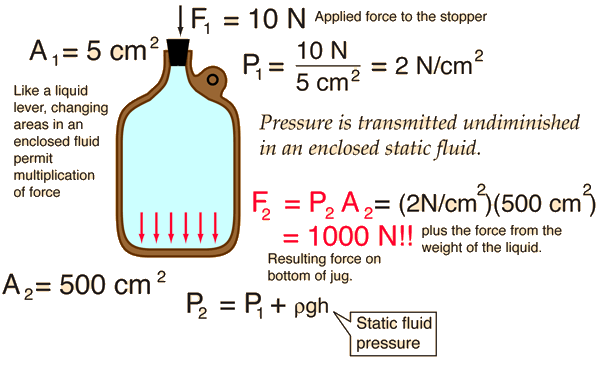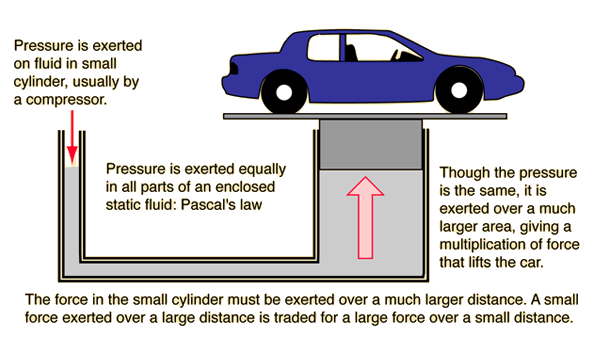Pascal's Principle
Pressure is transmitted undiminished in an enclosed static fluid.
 Any externally applied pressure is transmitted to all parts of the enclosed
fluid, making possible a large multiplication of force (hydraulic press principle). The pressure at the bottom of the jug is equal to the externally applied pressure on the top of the fluid plus the static fluid pressure from the weight of the liquid.
Any externally applied pressure is transmitted to all parts of the enclosed
fluid, making possible a large multiplication of force (hydraulic press principle). The pressure at the bottom of the jug is equal to the externally applied pressure on the top of the fluid plus the static fluid pressure from the weight of the liquid.
How to drop the bottom out of a bottle
Pascal's principle concepts
| HyperPhysics***** Mechanics ***** Fluids | R Nave |

